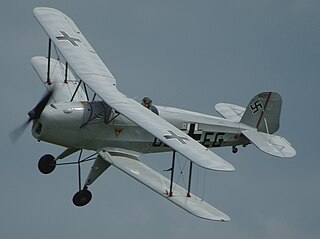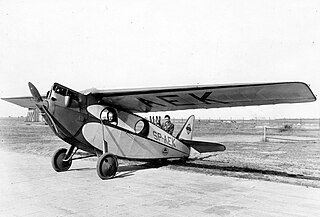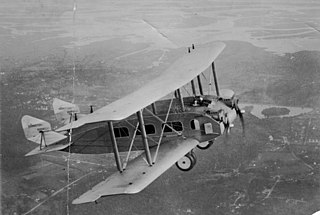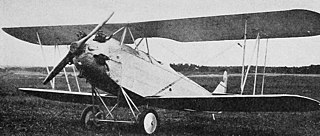
The Bücker Bü 131 Jungmann is a German 1930s basic training aircraft which was used by the Luftwaffe during World War II.

The RWD 5 was a Polish touring and sports plane of 1931, a two-seat high-wing monoplane, constructed by the RWD team. It was made famous by its transatlantic flight, being the smallest aircraft to cross the Atlantic.

The RWD 4 was a Polish sports plane of 1930, constructed by the RWD team.

The Avro Club Cadet was a 1930s single-engined British biplane trainer aircraft, designed and built by Avro as a development of the earlier Cadet. It was planned for private and club use and, unlike the Cadet, was fitted with folding wings.

The Cunningham-Hall Model PT-6 was an American six-seat cabin biplane aircraft of the late 1920s and was the first design of the Cunningham-Hall Aircraft Corporation of Rochester, New York.

The Reid Rambler, later known under the Curtiss-Reid brand after Reid was purchased by Curtiss, was a biplane trainer/sport aircraft built in Canada in the early 1930s and used in small numbers as a trainer aircraft by the Royal Canadian Air Force.
The Grahame-White Type XI was an early aircraft built in the United Kingdom and marketed as being particularly well-suited to military applications. It was a two-bay biplane of pod-and-boom configuration with unstaggered wings of slightly unequal span. The pilot and an observer sat in tandem, open cockpits in a streamlined nacelle, with the engine mounted pusher-fashion behind them. Unusually for an aircraft of this period, the propeller was not driven directly by the engine, but rather, via a sprocket and chain system that geared it down in the ratio of 14/23. The undercarriage was of the fixed, tailskid type but was designed to be easily exchanged for pontoons. Construction throughout was fabric-covered wood, with the exception of a neat aluminium cowling for the engine and transmission. A sample was exhibited at the Olympia Aero Show in 1914.
The Koolhoven F.K.42 was a parasol-wing, two-seat training monoplane manufactured by Koolhoven in the Netherlands. Only one was built.

The Macchi M.70, was an Italian light biplane of the late 1920s built by Macchi.

The Burnelli RB-1 was a US twin engine biplane airliner prototype from 1920, incorporating a lifting body fuselage.
The Starfire Firebolt, sometimes called the Starfire Firebolt Convertible, due to its removable canopy, is an American homebuilt aerobatic biplane that was designed by G. H. "Mac" McKenzie and produced by Starfire Aviation of Tempe, Arizona. When it was available the aircraft was supplied in the form of plans for amateur construction, with some pre-fabricated parts available.

The Svenska Aero Falken was a Swedish trainer aircraft. Two were built, with different engines and were used by the Swedish Air Force.
The Kawanishi K6K was a prototype Japanese training aircraft built by the Kawanishi Aircraft Company in the late 1930s.

The Gee Bee Model A was an American two-seat open cockpit single-bay biplane developed by the Granville Brothers that first flew in 1929.

The 1929 Curtiss Model 53 Condor, also known as the Curtiss Model 53 Condor 18 or the Curtiss CO Condor, was a civil passenger version of the Model 52 Condor bomber. A twin-engined biplane, it carried 18 passengers.

The Ireland Neptune was a four or five place pusher configuration biplane sold in flying boat and amphibian versions. Designed in the U.S. and first flown in 1927, well over 50 were built.
The Ishikawajima T-2 was a Japanese reconnaissance aircraft designed to meet the requirements of an Army competition between wood- and metal framed contestants. First flown in 1927 only two, with different engines, were built.
The Tachikawa KKY, full name Tachikawa Army Small and Light Ambulance Aircraft was designed to rescue injured or sick patients from places without established airfields. Following two earlier prototypes, 21 production examples were built between 1936 and 1940 and served in the Second Sino-Japanese War.
The Kawanishi K-10 Transport was a 1920s Japanese passenger and mail transport. Two were built, one briefly serving a route between cities in Japan, Korea and China.
The Vought V-100 Corsair Junior was an attempt to produce a cheaper, multi-purpose, export version of the Vought O2U/O3U observation aircraft it had produced for the United States Navy. It did not sell, and only the prototype was built.












